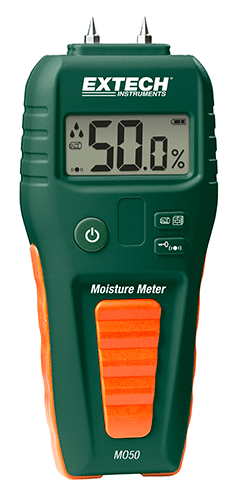The Ultimate Guide to Selecting the Right Moisture Meter for Your Demands
The Ultimate Guide to Selecting the Right Moisture Meter for Your Demands
Blog Article
Delve Into the Globe of Moisture Meters: Whatever You Need to Know
In the realm of dampness meters exists a world of precision and functionality that often goes unnoticed. Understanding just how moisture meters operate, the different kinds offered, and their varied uses can lose light on their importance in making sure quality and effectiveness.
Just How Moisture Meters Work
Moisture meters operate by determining the electric conductivity or capacitance of materials to identify the dampness web content present. These meters are vital devices across different markets, consisting of farming, building and construction, and woodworking. By making use of different methods such as pin-type or pinless innovation, dampness meters give exact analyses that help specialists make educated choices.
Pin-type moisture meters work by inserting the sharp pins into the material being tested. The electrical conductivity between the pins is then measured, with higher moisture degrees leading to increased conductivity. Moisture Meter. On the other hand, pinless moisture meters use electromagnetic signals to scan a bigger location without creating any kind of damages to the material's surface. These meters are perfect for rapidly evaluating moisture levels in huge locations or completed products.
No matter the method used, dampness meters play a critical function in stopping issues such as mold and mildew development, structural damage, or item problems triggered by excess moisture. Recognizing exactly how these meters work is crucial for making sure the high quality and integrity of materials in numerous applications.
Sorts Of Moisture Meters
Given the critical function moisture meters play in numerous industries, it is important to comprehend the different kinds available to specialists for precisely assessing dampness levels - Moisture Meter. There are mostly two primary types of wetness meters: pin-type and pinless wetness meters

On the various other hand, pinless moisture meters make use of electromagnetic sensing unit plates to scan a bigger location of the material without creating any damages. This type appropriates for quickly scanning big areas and is frequently made use of for flooring, wall surfaces, and ceilings. Pinless meters are convenient for taking readings on completed surfaces without leaving any type of noticeable marks.
Both types of wetness meters have their benefits and are chosen based upon the details demands of the work at hand. Comprehending the distinctions in between these types is vital for professionals to make accurate wetness analyses.
Applications Across Industries
Construction specialists rely on dampness meters to evaluate the dampness levels in structure materials like concrete, drywall, and timber, which is essential for keeping structural stability and protecting against problems like rot or mold and mildew. The flooring market makes use of wetness meters to gauge the moisture material in subfloors prior additional info to installing different flooring coverings, stopping pricey damages due to excess wetness. In the food sector, moisture meters are utilized to keep an eye on and control moisture levels in products such as grains, nuts, and dried out fruits to keep freshness and high quality.
Tips for Making Use Of Dampness Meters
Utilize the wetness meter's calibration setups to ensure Learn More accurate readings when determining the dampness content in various materials. Calibration is critical for the proper functioning of a moisture meter. Before each use, it is recommended to inspect and change the calibration setups according to the details product being examined. Additionally, ensure the meter is set to the correct moisture range for the material you are measuring to obtain the most precise outcomes.
When making use of a pin-type wetness meter, insert the pins to the appropriate deepness advised for the product being evaluated. This guarantees that the moisture analyses are extracted from the appropriate depth within the product, giving a much more accurate depiction of its dampness material. For pinless moisture meters, bear in mind to preserve proper call with the product's surface to obtain trustworthy readings.
Frequently check and change the batteries in your moisture meter to avoid incorrect analyses because of reduced power. Store the navigate to these guys meter in a secure and dry area when not in use to lengthen its lifespan and preserve its precision. By adhering to these suggestions, you can maximize the efficiency of your dampness meter and obtain exact dampness content measurements throughout various materials.
Maintenance and Calibration
To make certain the precision of dampness material dimensions, routine maintenance and calibration of the moisture meter are vital steps in its proper functioning. Calibration adjusts the dampness meter to make certain that it gives regular and trusted outcomes.
Calibration needs to be done periodically, specifically if the wetness meter is used often or in crucial applications where specific measurements are called for. By adjusting the wetness and keeping meter frequently, users can trust the precision of the wetness web content measurements acquired.
Conclusion

Finally, dampness meters play a crucial function in numerous sectors by accurately determining the dampness web content of materials. Understanding exactly how these tools function, the various types offered, and appropriate upkeep and calibration are essential for acquiring trustworthy outcomes. Whether in building and construction, production, or farming, making use of wetness meters assists make sure quality assurance and effectiveness in procedures.

In verdict, dampness meters play a vital function in different industries by properly determining the dampness content of materials.
Report this page